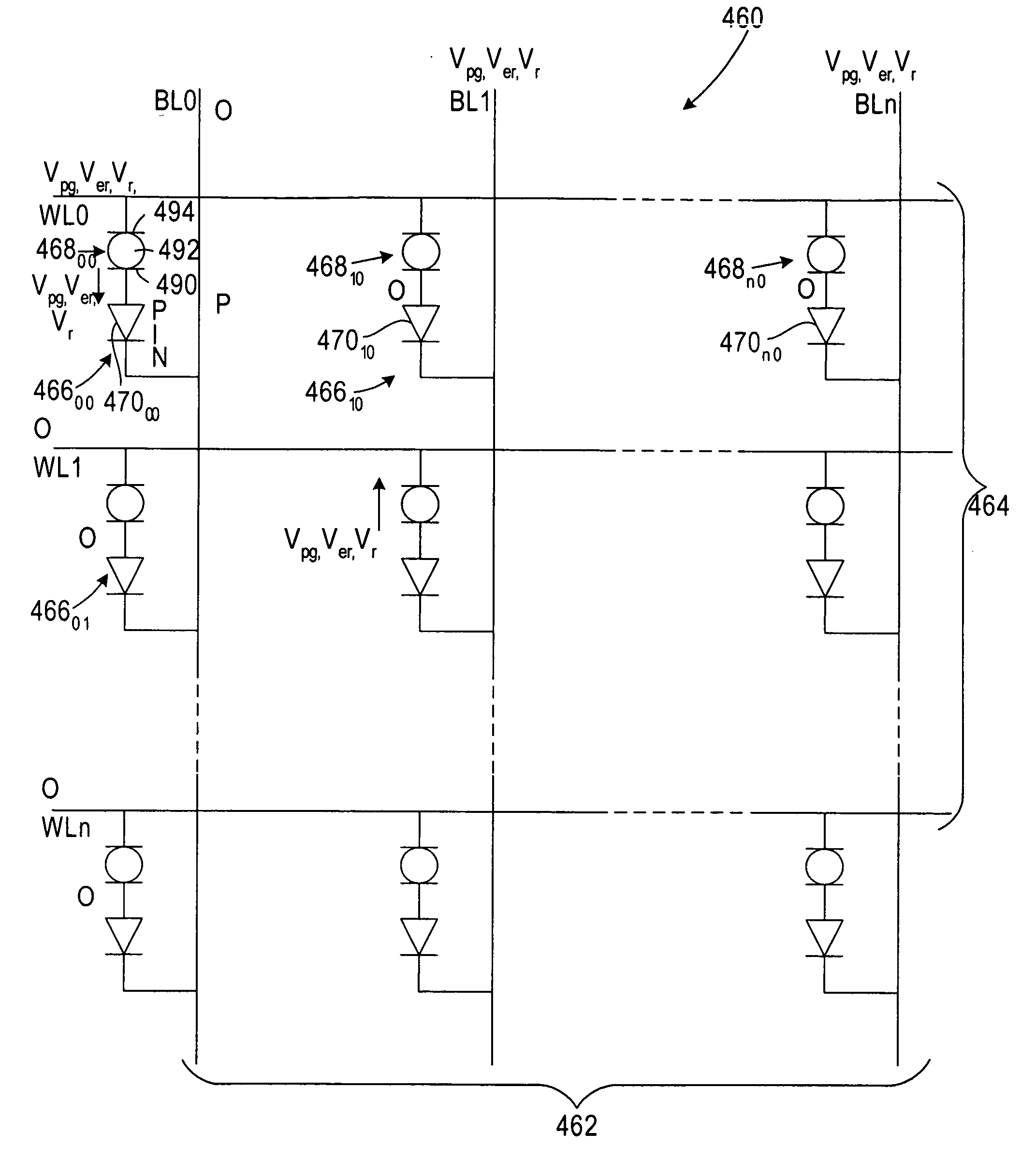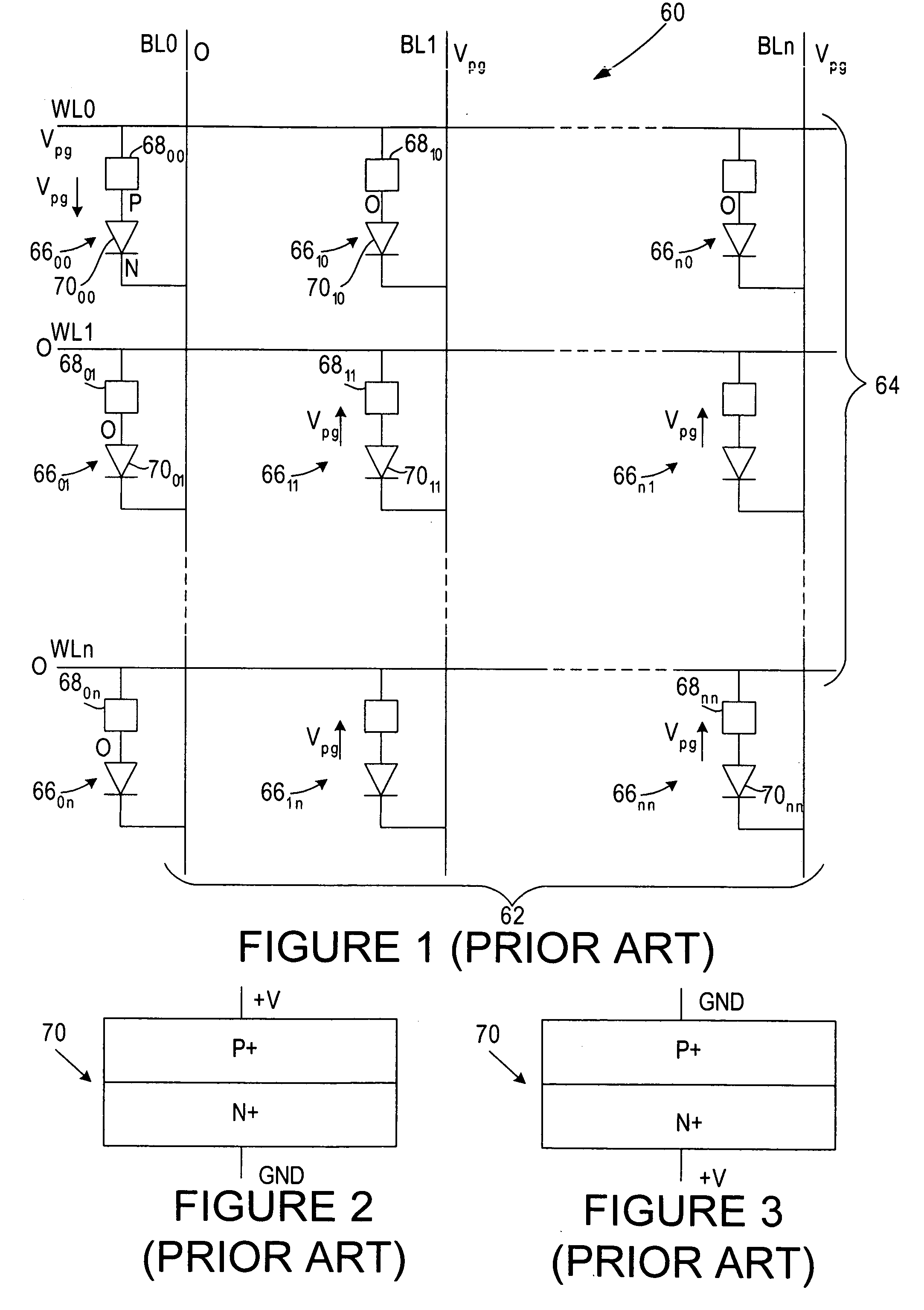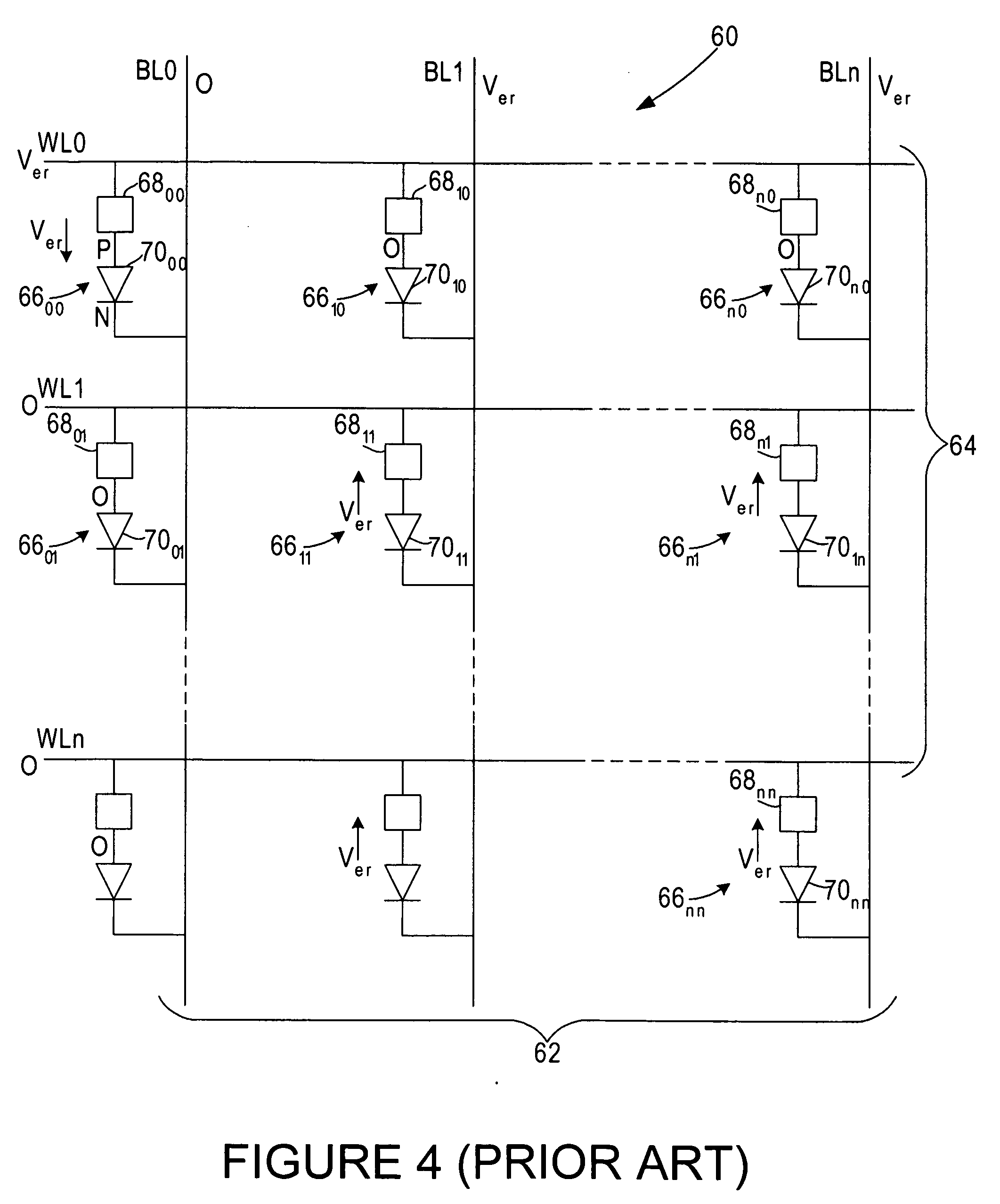Resistive memory array using P-I-N diode select device and methods of fabrication thereof
a technology of resistive memory array and select device, which is applied in the direction of digital storage, semiconductor devices, instruments, etc., can solve the problems of high power consumption and unsatisfactory disturbing of other cells
- Summary
- Abstract
- Description
- Claims
- Application Information
AI Technical Summary
Problems solved by technology
Method used
Image
Examples
second embodiment
[0034]In the invention, referring to FIG. 24, a monocrystalline P− silicon semiconductor substrate 200 is provided. Using appropriate masking techniques, an N+ ion blanket implant, for example phosphorous, is undertaken, at for example 5E15 keV, to form N+ region 202. A silicon nitride (Si3N4) layer is then deposited over the resulting structure and, using appropriate masking techniques, the silicon nitride layer is patterned into strips 204A, 204B, 204C running perpendicular to the plane of the drawing of FIG. 25. Using the silicon nitride strips 204A, 204B, 204C as a mask, the N+ region 202 is etched to form openings 206A, 206B, 206C therein (FIG. 26) and to define elongated N+ regions 202A, 202B in the form of strips running perpendicular to the plane of the drawing of FIG. 26. Next (FIG. 27), HDP undoped oxide 208A, 208B, 208C is deposited in the openings 206A, 206B, 206C, and a chemical mechanical polish (CMP) is undertaken to planarize the top surface of the resulting structur...
third embodiment
[0041]In the invention, referring to FIG. 42, the structure formed is similar to that of FIG. 9, including monocrystalline substrate 300, oxide regions 308A, 308B, N+ (for example phosphorus) doped oxide regions 310A, 310B, silicon strips 306A, 306B, and silicon nitride strips 302A, 302B, 302C. At this point in the process, high temperature is applied to the resulting structure, causing phosphorus dopant to simultaneously diffuse from each of the phosphorus doped oxide portions into the adjacent silicon strips on opposite sides thereof. In this way, N+ regions 314A, 314B, 314C, 314D, 314E are formed, the diffusion being controlled and limited so that an intrinsic portion remains between the N+ regions formed in each silicon strip (316A, 316B shown). An N+ activation step is then undertaken.
[0042]Next, portions of the phosphorus doped oxide 310A, 310B are removed, leaving smaller portions 310C, 310D on the HDP oxide 308A, 308B, and a metal layer 318, for example cobalt, tantalum, nic...
PUM
 Login to View More
Login to View More Abstract
Description
Claims
Application Information
 Login to View More
Login to View More - R&D
- Intellectual Property
- Life Sciences
- Materials
- Tech Scout
- Unparalleled Data Quality
- Higher Quality Content
- 60% Fewer Hallucinations
Browse by: Latest US Patents, China's latest patents, Technical Efficacy Thesaurus, Application Domain, Technology Topic, Popular Technical Reports.
© 2025 PatSnap. All rights reserved.Legal|Privacy policy|Modern Slavery Act Transparency Statement|Sitemap|About US| Contact US: help@patsnap.com



